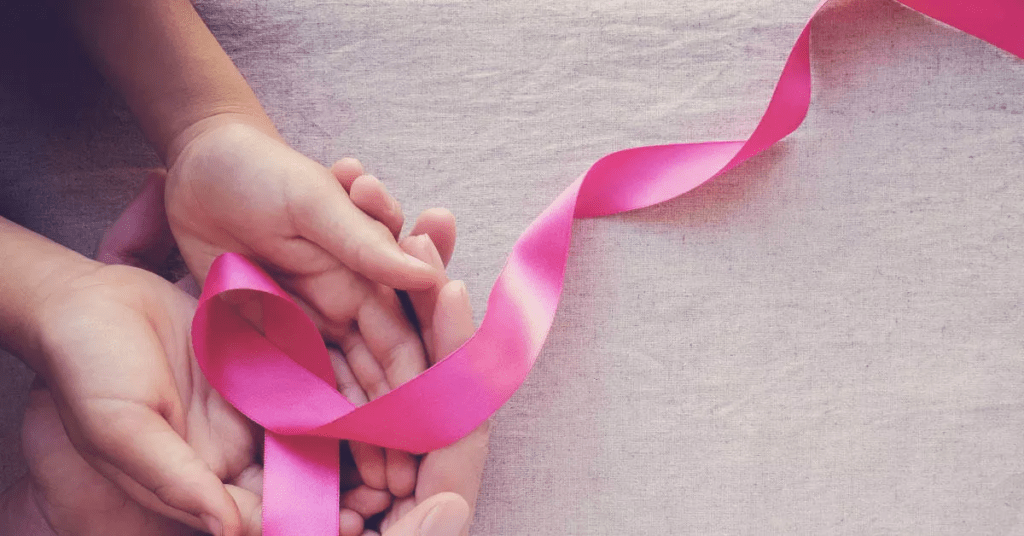Caring for Your Psychological Needs as an Adolescent or Young Adult Cancer Survivor
by jusonco.com | Jul 18, 2025 | Blogs
Surviving cancer as an adolescent or young adult (AYA)—defined as those aged 15 to 39—is an experience like no other. It can derail major life events like education, career, relationships, and emotional development. While beating cancer is a monumental achievement, the road after treatment can be surprisingly difficult to navigate.
Being cancer-free does not always mean being emotionally healed. In fact, many AYA survivors say the emotional toll only becomes more apparent after the physical fight is over.
In this blog, we explore the unique psychological needs of AYA cancer survivors and how they can prioritize mental well-being, rebuild identity, and find emotional support—especially in a country like India, where awareness around AYA survivorship is still emerging. We’ll also highlight how access to affordable cancer treatment in Chennai, including support for post-treatment mental health, is making a difference for young survivors.

The Hidden Battle: Emotional Recovery After Cancer
AYA cancer survivors face challenges that differ significantly from older adults or young children. Unlike pediatric survivors who grow up with their diagnosis or older adults with settled lives, AYAs are in a critical phase of self-discovery and transition.
When cancer enters this phase of life, it can trigger:
- Identity disruption
- Feelings of being “left behind”
- Social withdrawal
- Fear of recurrence
- Depression and anxiety
- Struggles with body image, fertility, or dating
- Uncertainty about career, finances, or independence
These struggles often go unnoticed. After treatment ends, the spotlight dims, friends move on, and the survivor is expected to return to “normal.” But for many AYAs, life post-treatment is anything but normal.
Looking for affordable cancer care?
At Jus’ Onco Clinic, we offer expert treatment options tailored to your needs, ensuring compassionate care at every step.
Common Psychological Challenges Among AYA Survivors
1. Fear of Recurrence
Even after being declared cancer-free, many AYAs live with the constant fear that cancer might come back. This fear may resurface before every follow-up scan or with the smallest bodily discomfort.
2. Social Isolation
AYA survivors often feel isolated from peers who haven’t experienced serious illness. They may avoid social gatherings, lose touch with friends, or feel uncomfortable talking about their experience.
3. Anxiety and Depression
These can be triggered by multiple factors trauma from the diagnosis, side effects of treatment, disruptions to life plans, and future uncertainty. Many don’t seek help due to stigma or lack of access to mental health care.
4. Body Image and Sexuality
Scars, hair loss, weight changes, and changes in sexual function or fertility can deeply affect body confidence and self-worth, especially in a stage of life where appearance and dating matter.
5. Survivor’s Guilt
Some AYAs experience guilt over surviving when others did not. This can lead to emotional numbness, self-blame, or feelings of unworthiness.
Emotional Care Is Health Care
Caring for your psychological well-being is just as important as following up with your oncologist. In fact, emotional resilience can improve your overall recovery, help prevent burnout, and foster a more hopeful outlook on life.
Acknowledge Your Emotions
You’ve been through a lot. Permit yourself to feel sad, angry, anxious, or confused. Emotional healing begins when we stop judging our feelings.
Seek Counseling or Therapy
Psychologists trained in psycho-oncology or AYA care can help you process trauma, adjust to post-treatment life, and set new goals.
In Chennai, many cancer care centers are integrating mental health support into survivorship plans. Alongside cancer treatment in Chennai, institutions are recognizing the importance of mental well-being as a part of holistic recovery.
Join AYA Support Groups
Talking to others who’ve “been there” reduces feelings of isolation. Peer support—whether online or in-person—helps normalize the emotional rollercoaster and provides a sense of belonging.
Journal or Express Yourself Creatively
Writing, art, music, or storytelling can be therapeutic ways to channel emotions and track your progress over time.
Practice Mindfulness or Meditation
These techniques reduce anxiety, calm the mind, and help you focus on the present instead of worrying about the past or future.
Rebuilding Your Identity
AYA survivors often ask, “Who am I now?”
Cancer can strip away plans, relationships, and parts of your identity. But recovery is also a time of reconstruction.
- Maybe you’ll explore new passions.
- Maybe your definition of success changes.
- Maybe you find meaning in advocacy, creativity, or helping others.
There’s no pressure to bounce back immediately. Rebuilding identity takes time and self-compassion. Consider speaking to a life coach, therapist, or career counselor who understands survivorship transitions.
Balancing Mental Health With Financial Stress
In India, one of the biggest burdens for cancer survivors especially AYAs—is the financial impact of treatment, which often overlaps with emotional distress.
Medical costs, job loss, educational disruption, or the pressure to “earn back” money lost during treatment can weigh heavily on mental health.
Relief in Chennai:
Today, several hospitals are bridging this gap by offering affordable cancer treatment in Chennai, including access to low-cost chemotherapy, radiation therapy, and survivorship support. Many also offer:
- Financial counseling
- Access to insurance schemes (Ayushman Bharat, CMCHIS, ESIC)
- Installment or EMI payment options
- Free mental health check-ins as part of post-treatment plans
In particular, chemotherapy treatment cost in Chennai has become more manageable for middle-class families, thanks to government-aided facilities and ethical private cancer centers.
Navigating Relationships, Fertility, and Intimacy
Many AYA survivors feel emotionally distant in relationships after cancer, even with close friends or partners.
- You might worry about dating with visible scars.
- You may struggle to communicate intimacy needs.
- Fertility issues may impact your self-esteem or family planning dreams.
Talk about it. Fertility counselors, sexual health experts, and survivor mentors can help you navigate these complex emotions. AYA-specific support groups also discuss these topics in safe, judgment-free spaces.
Reintegration: School, College, and Work Life
Returning to school, college, or work can be overwhelming. You may feel behind your peers or worry about being judged for your medical history.
Tips to ease the transition:
- Ask for academic or workplace accommodations if needed
- Start part-time and build stamina slowly
- Educate your peers/supervisors to foster empathy
- Be kind to yourself—productivity does not define your worth
What to Watch For: When to Seek Help
Sometimes emotional challenges persist longer than expected. Consider professional help if you experience:
- Ongoing sadness or anxiety
- Loss of interest in things you once enjoyed
- Sleep problems
- Emotional numbness
- Thoughts of self-harm or hopelessness
Mental health support is available—and effective. Recovery isn’t just surviving; it’s learning to thrive.
Final Thoughts: Healing Is Emotional, Too
As an adolescent or young adult cancer survivor, you’ve lived through an experience that few can truly understand. But your life does not stop at the finish line of treatment. In many ways, this is your new beginning—a journey of rediscovering who you are, what you value, and what brings you peace.
Let your emotional recovery matter. Your mental health deserves the same attention and care as your physical health.
Affordable Mental & Physical Cancer Care in Chennai
Thanks to compassionate initiatives and expanding access, affordable cancer treatment in Chennai is no longer out of reach for young patients and survivors. Leading oncology centers in the city now combine expert care with financial flexibility, allowing survivors to focus on recovery—not expenses.
Whether you’re undergoing chemotherapy, radiation, or follow-up scans, you can now access structured emotional support programs. If you’re concerned about chemotherapy treatment cost in Chennai, many hospitals now offer detailed price breakdowns, government subsidy support, and in-house psychological care without high costs.
You don’t have to walk this path alone—support is available, affordable, and designed for you.
Looking for affordable cancer care?
At Jus’ Onco Clinic, we offer expert treatment options tailored to your needs, ensuring compassionate care at every step.
Frequently asked Questions
1. Do adolescent and young adult (AYA) cancer survivors need mental health support after treatment?
Yes. Many AYA survivors experience emotional distress after treatment, including anxiety, depression, fear of recurrence, and identity struggles. Emotional recovery is just as important as physical healing.
2. Where can I find affordable cancer treatment in Chennai that includes mental health care?
Several cancer hospitals in Chennai now offer affordable treatment packages that include emotional support—such as free counseling, survivor programs, and in-house psychologists. Ask your doctor or center about integrated post-treatment care.
3. How can AYA cancer survivors deal with social isolation and peer disconnect?
Joining AYA support groups, survivor networks, or therapy sessions can help reduce isolation. Talking with peers who understand your journey fosters healing and belonging.
4. What if I feel anxious or depressed even after being cancer-free?
This is common. Survivorship brings emotional challenges like fear of recurrence and life uncertainty. Seek support from trained psycho-oncology counselors or therapists who specialize in cancer-related trauma.
5. Can cancer affect my confidence in relationships, fertility, or dating?
Yes. Visible scars, fertility concerns, and emotional trauma can affect intimacy and self-worth. Counseling and fertility experts can guide you through these sensitive areas with empathy and support.
















